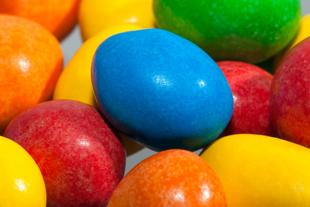Brain study reveals the roots of chocolate temptations
A report published in Current Biology says the urge to overeat sweet and fatty treats traces to an unexpected part of the brain and its production of a natural, opium-like chemical.
Alexandra DiFeliceantonio’s team at the University of Michigan made the discovery by giving rats an artificial boost with a drug delivered straight to a brain region called the neostriatum. The rats gorged themselves on more than twice the number of M&M chocolates than they would otherwise have eaten. The researchers also found that enkephalin, the natural drug-like chemical produced in the same brain region, also surged when rats began to eat the candy-coated morsels.
The findings reveal a surprising extension of the neostriatum’s role, as brain region had primarily been linked to movement.
The same brain area is active when obese people see foods and when drug addicts see drug scenes and it seems likely that the enkephalin findings in rats mean that this neurotransmitter may drive some forms of overconsumption and addiction in people.
Source:
Elisabeth Lyons
elyons@cell.com
617-386-2121
Cell Press
Last Reviewed 27/Feb/2014
Editor
Latest posts by Editor (see all)
- Oily fish and diabetes prevention - 04/06/20
- Manage the andropause - 11/12/17
- Testing testosterone levels - 07/12/17






